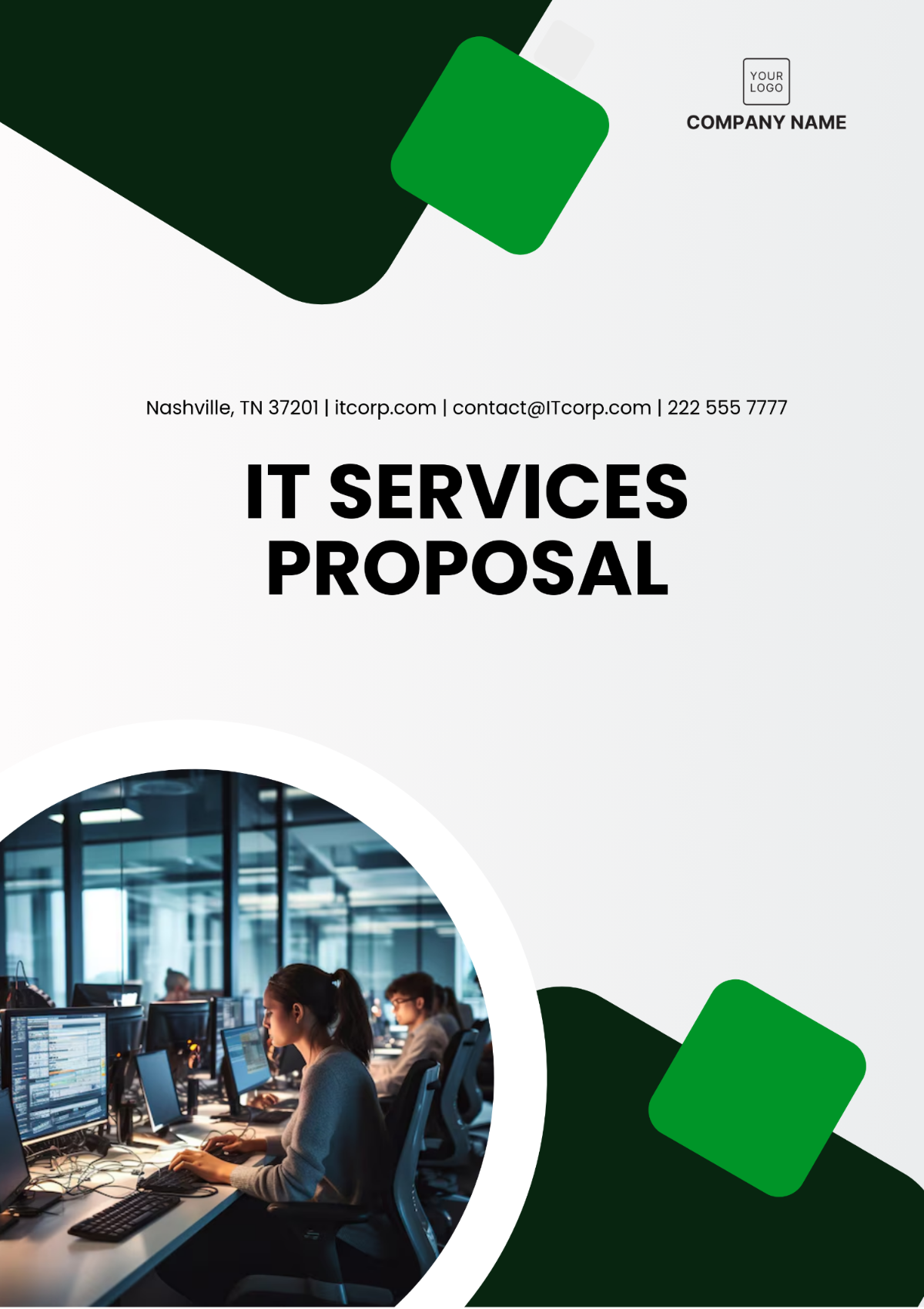Free Security Service Proposal Template
Security Service Proposal
1. Introduction
1.1 Purpose of the Proposal
The primary aim of this Security Service Proposal is to provide a thorough outline of the comprehensive security solutions offered by [Your Company Name]. These solutions are specifically designed to address the evolving security challenges faced by organizations in the year 2050 and beyond. The objective is to deliver tailored security services that not only protect physical assets but also ensure the safety of personnel and the integrity of information systems. By understanding and anticipating the security landscape's rapid changes, we aim to implement proactive measures that adapt to both existing and emerging threats.
1.2 Company Overview
Founded with a vision to revolutionize the security industry, [Your Company Name] has firmly established itself as a leader in providing innovative security solutions. With over [20 years] of experience in the field, we have developed a diverse portfolio of services that include risk assessment, physical security, surveillance technology, cybersecurity, and incident response management. Our commitment to excellence is demonstrated through our highly skilled workforce and our ongoing investment in cutting-edge technology. We pride ourselves on our ability to create customized solutions that meet the unique needs of each client while maintaining the highest standards of service delivery.
1.3 Scope of Services
This proposal outlines the following comprehensive security services:
Risk Assessment and Management: A thorough analysis of current security vulnerabilities and the development of strategic plans to mitigate risks.
Physical Security Solutions: Implementation of on-site security personnel, access control systems, and surveillance technologies to safeguard assets.
Technological Security Solutions: Deployment of advanced cybersecurity measures to protect data and IT infrastructure from threats.
Incident Response and Management: Creation of incident response plans to ensure quick and effective responses to security breaches.
Ongoing Support and Monitoring: Continuous assessment and refinement of security measures to adapt to evolving threats and compliance requirements.
2. Current Security Landscape
2.1 Analysis of Security Challenges
In 2050, organizations face increasingly complex security threats that pose significant risks to their operations, reputation, and overall viability. These threats can be broadly categorized into several key areas:
Cybersecurity Threats: With the rapid advancement of technology, cybersecurity threats have evolved dramatically. Ransomware attacks, data breaches, and phishing schemes are just a few examples of the risks organizations must navigate. The impact of these threats can be devastating, resulting in financial losses averaging $[1,000,000] per incident, regulatory fines, and damage to brand reputation.
Physical Threats: Organizations are also vulnerable to physical threats such as vandalism, theft, and acts of terrorism. As public spaces and workplaces become more crowded and interconnected, the potential for these threats increases. A proactive approach to physical security is essential to protect both assets and individuals, with estimated losses from physical theft reaching $[500,000] annually for many organizations.
Insider Threats: Insider threats arise from actions taken by employees or contractors that compromise security. Whether intentional or unintentional, these threats can lead to significant breaches of trust and security. Employees may inadvertently expose sensitive information or intentionally sabotage security measures, necessitating comprehensive training and monitoring. The cost of insider threats is estimated to be around $[200,000] per incident.
Table 1: Common Security Threats
Threat Type | Description | Potential Impact |
|---|---|---|
Cybersecurity | Attacks targeting data and IT infrastructure | Average loss of $[1,000,000] per incident |
Physical Security | Unauthorized access to premises or assets | Average theft loss of $[500,000] annually |
Insider Threats | Actions by employees that compromise security | Average cost of $[200,000] per incident |
Natural Disasters | Events like earthquakes or floods affecting safety | Injury, property loss, disruption of operations |
2.2 Importance of Comprehensive Security Solutions
To effectively mitigate these risks, organizations must adopt a multi-faceted security strategy that encompasses both physical and technological measures. A comprehensive security solution not only addresses immediate threats but also fosters a culture of security awareness and preparedness. By integrating various security components, organizations can create a robust defense mechanism that is capable of evolving in response to new challenges. This holistic approach ensures that all aspects of security are considered and managed proactively.
3. Proposed Security Solutions
3.1 Risk Assessment and Management
3.1.1 Initial Assessment
The first step in our security solution is conducting a thorough risk assessment of the organization’s current security posture. This assessment involves several key activities:
Evaluation of Existing Security Measures: We will review the current security infrastructure to identify strengths and weaknesses. This includes an examination of physical security measures, cybersecurity protocols, and personnel training.
Identification of Vulnerabilities: Our team will perform vulnerability assessments to pinpoint areas of concern. This process involves assessing potential entry points for unauthorized access, analyzing cybersecurity practices, and evaluating the readiness of staff to respond to security incidents.
Analysis of Potential Threats: By analyzing historical data and current trends, we will identify potential threats specific to the organization’s industry and operational context. This predictive analysis will help us craft a more effective risk management strategy.
3.1.2 Risk Management Plan
Based on the initial assessment, we will develop a tailored risk management plan that outlines strategies to mitigate identified risks. This comprehensive plan will include:
Recommendations for Security Upgrades: We will propose enhancements to existing security measures, whether through technology upgrades, personnel training, or procedural changes. For example, investing an estimated $[250,000] in new security technology can lead to a [30%] reduction in vulnerabilities.
Implementation of New Security Protocols: Our team will assist in the implementation of new protocols that align with industry best practices and compliance standards. This may include access control measures, emergency response plans, and cybersecurity protocols.
Training for Staff on Security Awareness: An integral part of our risk management plan is training employees on security awareness. This will empower staff to recognize potential threats and respond appropriately, fostering a culture of security vigilance within the organization.
3.2 Physical Security Solutions
3.2.1 On-Site Security Personnel
At [Your Company Name], we provide highly trained security personnel who can be deployed to client locations to ensure the safety of employees and assets. Our security personnel are trained to handle various responsibilities, including:
Access Control and Monitoring: Personnel will monitor access points to ensure that only authorized individuals can enter secure areas. This involves checking identification and using electronic access systems.
Patrol Duties and Surveillance: Our security team will conduct regular patrols of the premises to deter criminal activity and respond to any suspicious behavior. Additionally, they will utilize surveillance technology to monitor activities in real-time.
Incident Response and Reporting: In the event of an incident, our personnel are trained to respond swiftly and effectively, ensuring that appropriate measures are taken. They will document all incidents for review and analysis.
3.2.2 Access Control Systems
To enhance physical security, we recommend implementing advanced access control systems. These systems are critical in managing who can access specific areas and include:
Key Card Access: Key card systems allow for controlled entry into secure areas. They can be programmed for individual users, providing a clear record of access.
Biometric Scanners: These systems utilize fingerprints or facial recognition technology to ensure that only authorized individuals can access sensitive areas, greatly reducing the risk of unauthorized entry. The installation of biometric systems typically costs around $[75,000].
Remote Monitoring Capabilities: Access control systems can be monitored remotely, enabling real-time oversight and management from any location. This flexibility is crucial for organizations with multiple facilities.
3.2.3 Surveillance Technology
The integration of surveillance technology is essential for maintaining security. Our services include:
Installation of High-Definition Cameras: We will install state-of-the-art cameras that provide high-resolution footage for effective monitoring. These cameras can be strategically placed to cover key areas of the premises, with an estimated cost of $[50,000] for a comprehensive setup.
Cloud-Based Storage for Footage: To enhance security, video footage will be stored securely in the cloud, allowing for easy retrieval and review. This setup also mitigates the risk of data loss due to equipment failure.
Remote Access for Real-Time Monitoring: Clients will have the ability to access live camera feeds from their devices, providing them with peace of mind and the ability to respond to incidents as they occur.
3.3 Technological Security Solutions
3.3.1 Cybersecurity Measures
In addition to physical security, organizations must safeguard their digital assets. [Your Company Name] offers comprehensive cybersecurity solutions designed to protect against evolving cyber threats. Our offerings include:
Firewall Installation and Management: We will install robust firewalls that monitor and control incoming and outgoing network traffic based on predetermined security rules, with costs typically around $[30,000].
Intrusion Detection Systems (IDS): These systems will detect and alert staff to potential unauthorized access or anomalies in network traffic, providing an additional layer of security.
Regular Security Audits and Penetration Testing: We will conduct routine security audits to identify vulnerabilities and perform penetration testing to simulate cyber-attacks, assessing the effectiveness of existing security measures. Each audit is estimated to cost $[15,000].
3.3.2 Data Protection Strategies
Protecting sensitive data is crucial for any organization. Our data protection strategies include:
Encryption of Sensitive Information: All sensitive data will be encrypted to prevent unauthorized access. This ensures that even if data is intercepted, it remains unreadable.
Secure Backup Solutions: Regular backups of critical data will be performed and stored securely offsite to ensure that data can be recovered in the event of a breach or loss.
Employee Training on Data Security: We will conduct training sessions focused on data security best practices, helping employees recognize phishing attempts and understand the importance of data protection.
3.4 Incident Response Management
3.4.1 Development of Incident Response Plans
Preparedness is essential when it comes to managing incidents effectively. [Your Company Name] will develop customized incident response plans that outline specific steps to take during various scenarios. Key elements of the plans will include:
Establishing Incident Response Teams: Teams will be formed, comprising key personnel responsible for managing incidents. This ensures a swift and coordinated response to any security event.
Communication Strategies with Stakeholders: We will develop communication plans to keep all stakeholders informed during an incident, including employees, clients, and law enforcement if necessary.
Post-Incident Analysis to Prevent Future Occurrences: After any incident, our team will conduct a thorough analysis to identify the root cause and implement measures to prevent recurrence. This continuous improvement approach strengthens the organization’s overall security posture.
3.4.2 Continuous Monitoring
To enhance security, continuous monitoring of systems and personnel is essential. [Your Company Name] offers:
24/7 Security Monitoring: Our security operations center (SOC) will monitor systems around the clock, ensuring rapid response to detected threats or anomalies.
Regular Updates to Security Protocols: As new threats emerge, we will continuously update security protocols to adapt to changing conditions and maintain a strong defense.
Rapid Response to Detected Threats: Our trained personnel will respond immediately to any alerts generated by our monitoring systems, ensuring that threats are addressed before they escalate.
3.5 Ongoing Support and Monitoring
3.5.1 Training and Awareness Programs
Training programs for staff will be implemented to promote a culture of security awareness. These programs will cover:
Identification of Potential Threats: Employees will be trained to recognize potential security threats, from phishing attempts to unauthorized access.
Proper Response Procedures: Staff will learn appropriate procedures to follow when a threat is identified, ensuring that they can respond effectively and without panic.
Use of Security Technology: Employees will receive training on how to properly use security systems and technologies, ensuring that they can utilize these tools to enhance security.
3.5.2 Regular Security Audits
To ensure the effectiveness of security measures, we will conduct regular security audits that include:
Evaluating the Effectiveness of Implemented Measures: Our audits will assess the performance of security systems and personnel, identifying areas for improvement.
Updating Security Protocols as Necessary: Based on audit findings, we will recommend and implement necessary changes to security protocols to ensure ongoing effectiveness.
Reporting Findings to Management: Audit results will be compiled into detailed reports, which will be presented to management for review. This ensures that leadership is informed of the organization’s security posture and any necessary improvements.
4. Implementation Timeline
4.1 Project Phases
The implementation of our proposed security solutions will occur in several phases, each critical to the overall success of the project:
Phase | Description | Timeline |
|---|---|---|
Phase 1: Assessment | Conduct initial risk assessment and evaluate current security measures | [Month 1] |
Phase 2: Planning | Develop risk management plan and security protocols based on assessment findings | [Month 2] |
Phase 3: Implementation | Deploy security personnel and technology solutions, including access control and surveillance systems | [Months 3-4] |
Phase 4: Training | Conduct staff training and awareness programs to prepare employees for new security measures | [Month 5] |
Phase 5: Monitoring | Begin ongoing support and monitoring, including regular audits and updates to security protocols | [Month 6] onwards |
4.2 Milestones
Each phase will include specific milestones to track progress and ensure accountability:
Completion of Risk Assessment: End of [Month 1], providing a comprehensive understanding of current vulnerabilities.
Approval of Risk Management Plan: End of [Month 2], detailing the steps necessary to enhance security.
Deployment of Security Personnel: End of [Month 4], ensuring that trained personnel are in place to monitor and secure the premises.
Completion of Training Programs: End of [Month 5], ensuring that all employees are prepared and knowledgeable about security protocols.
5. Budget and Pricing
5.1 Cost Breakdown
The total cost of the proposed security services is estimated at $[1,000,000], with a detailed breakdown as follows:
Service | Description | Cost |
|---|---|---|
Risk Assessment | Comprehensive evaluation of current security measures and vulnerabilities | $[50,000] |
Physical Security Personnel | Deployment of [10] trained personnel for [40] hours/week to monitor and secure premises | $[300,000] |
Surveillance Technology | Installation of [30] high-definition cameras and monitoring systems | $[50,000] |
Cybersecurity Solutions | Implementation of cybersecurity measures, including firewalls and IDS | $[150,000] |
Ongoing Support and Audits | Continuous monitoring and regular security audits to ensure effectiveness | $[100,000] |
Training Programs | Development and delivery of staff training on security awareness and response | $[25,000] |
Total Estimated Cost | $[1,000,000] |
5.2 Payment Schedule
We propose the following payment schedule for the project, ensuring transparency and accountability at each stage:
Initial Payment: [30]% of the total cost upon acceptance of the proposal, which will initiate the assessment phase. ($[300,000])
Second Payment: [30]% upon completion of the risk assessment, ensuring that resources are allocated for the planning phase. ($[300,000])
Final Payment: [40]% upon project completion, following the implementation of all security measures and training programs. ($[400,000])
6. Benefits of Choosing [Your Company Name]
6.1 Expertise and Experience
At [Your Company Name], we pride ourselves on our expertise and extensive experience in security management. Our team consists of industry veterans who bring a wealth of knowledge and practical experience to the table. They are equipped to handle a wide range of security scenarios, from routine patrols to high-stakes incident response. Our focus on continuous education and training ensures that our personnel remain up-to-date with the latest security trends and technologies, providing our clients with peace of mind.
6.2 Customized Solutions
We recognize that every organization has unique security needs, which is why our approach is centered around customization. We work closely with clients to understand their specific requirements, challenges, and objectives. By conducting a thorough analysis and engaging in open communication, we can create tailored security solutions that maximize effectiveness and address individual concerns. This customized approach not only enhances security but also fosters a sense of trust and partnership between [Your Company Name] and our clients.
6.3 Commitment to Excellence
Our commitment to providing top-notch security solutions is reflected in our customer satisfaction ratings and successful project completions. We adhere to strict quality standards and continuously strive for excellence in every aspect of our service delivery. Our clients can rest assured that they are receiving the highest level of service, backed by a team dedicated to their safety and security. We regularly seek feedback from our clients to identify areas for improvement and ensure that our services meet their evolving needs.
7. Conclusion
[Your Company Name] offers a comprehensive and tailored approach to security services designed to protect your organization against the myriad threats it faces in 2050 and beyond. Our solutions encompass risk assessment, physical security, technological safeguards, and incident management, creating a multi-layered defense against potential vulnerabilities. By choosing our services, you can be assured of a robust security posture that safeguards your assets, enhances your overall business continuity, and fosters a culture of security awareness among your staff.
We look forward to the opportunity to work with your organization and contribute to a safer, more secure environment. Our team is eager to assist in crafting a security plan that aligns with your strategic objectives and protects what matters most to you. Thank you for considering [Your Company Name] as your security partner.

















































